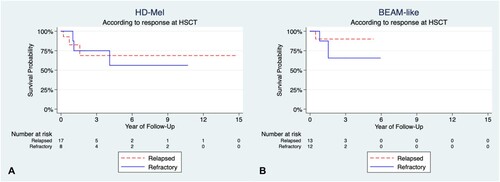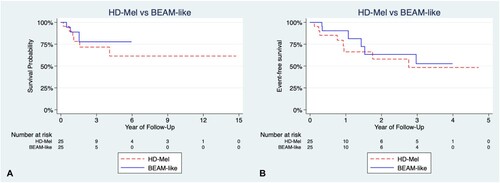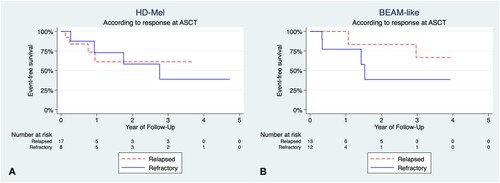Figures & data
Table 1. Summary of the conditioning regimens employed in the autografts.
Table 2. Salient features of the HD-Mel and BEAM-like groups.
Figure 1. Overall survival (OS) comparison according to conditioning and main features. (A) OS of patients in the HD-Mel group according to response at ASCT (p 0.9). (B) OS patients in the BEAM-like group according to response at ASCT (p 0.4).

Table 3. Results of univariate and multivariate Cox-regression models for overall survival in patients transplanted with HD-Mel.
Table 4. Results of univariate and multivariate Cox-regression models for event-free survival in patients transplanted with HD-Mel.
Figure 2. Comparison of overall survival (OS) and event-free survival (EFS) between HD-Mel and BEAM-like cohorts. (A) OS in patients treated with HD-Mel or BEAM-like, there were no significant differences (p 0.5); (B) Comparison of EFS in patients treated with HD-Mel or BEAM-like, there were no significant differences (p 0.5).

Figure 3. Event-free survival (EFS) comparison according to conditioning and main features. (A) EFS of patients in the HD-Mel group according to response at ASCT (p 0.8); (B) EFS of patients in the BEAM-like group according to response at ASCT (p 0.1).

Figure 4. Comparison of overall survival at two, three and five years (y) informed for different regimens. Data of this study and from the literature (ref).

Table 5. Costs of a 50 mg vial of melphalan, either innovator or generic (*) in different parts of the world.
